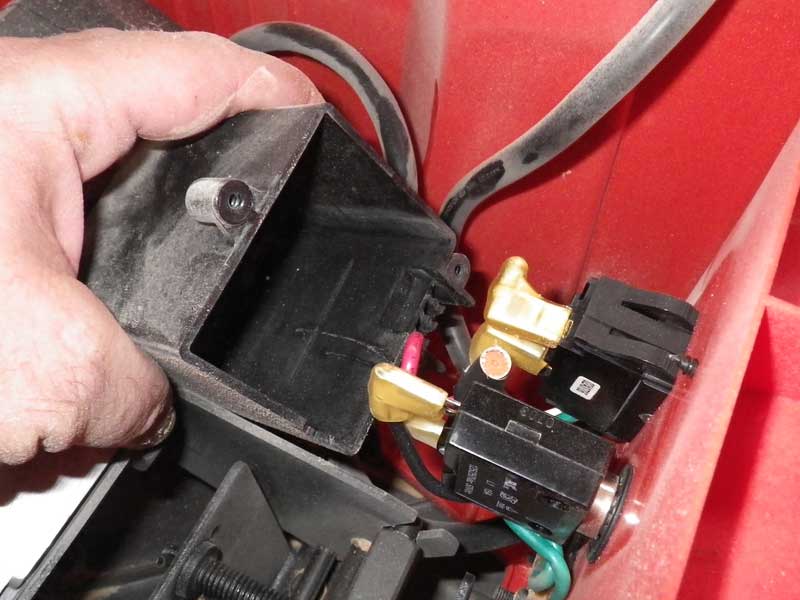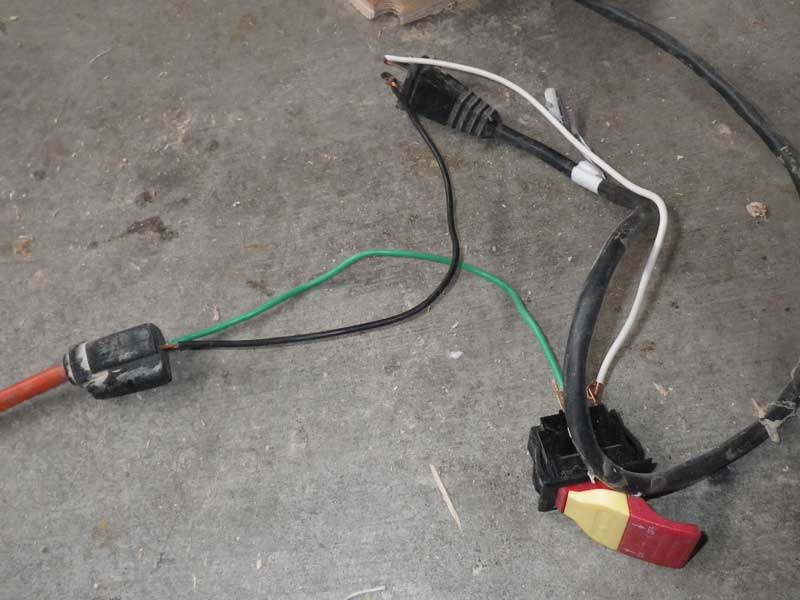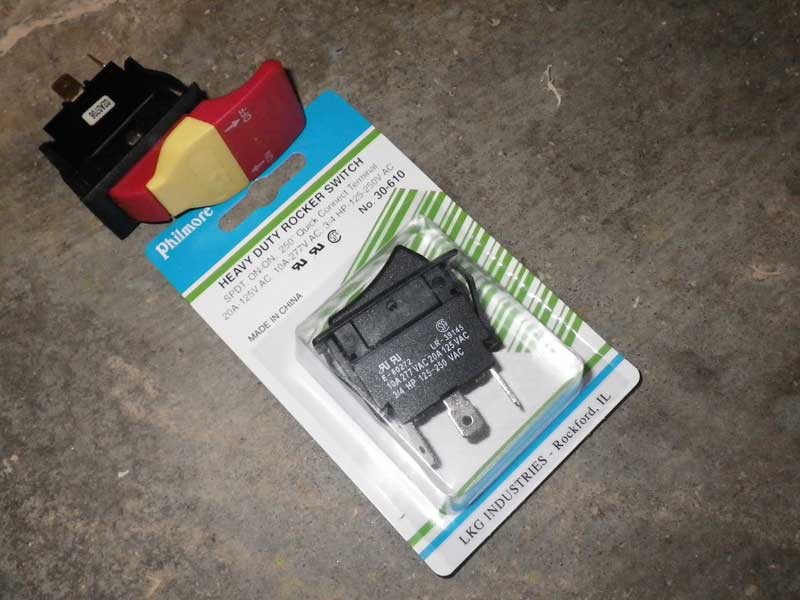|
Tablesaw Troubles Of all the tools I love, I love my tablesaw the most. Sure, it is a $120 Firestorm (Black& Decker's cheap line) from Home Depot, but man, tablesaws are the sh*t, I tells ya - especially for Skin-on-Frames where you end up ripping a lot of lumber. Imagine my pain when I went down, plugged her in, flipped the switch, and nothing happened. I was more than gasted, I was flabbergasted. NOTE: For the rest of this story, you HAVE to remember I am a very cheap b@stard. If you can't keep this thought in your head, read something else. The first thing I suspected was my extension cord. Keely bought it for me nearly 20 years ago and it as seen better days. We live on a very small lot and I'd asked for a 25' cord. She got a 100' cord because the price difference was something like $3. I keep it in a bucket so I don't trip over it al the time. ANYHOO, the first thing I suspected was my extension cord. Why? Because I tend to forget about it - it seems to live in my blind spot. I'll get cranking with my power planer or belt sander and completely forget where the power comes from. Then I'll do a really spectacular reach and BAM! It's all sparks and smoke, the breakers trip and the garage is plunged into darkness. It really is beautiful when a tool cuts through a power line, BUT, you do have to fix it. A smart man would solder the wires back together (in the right order) heat shrink-wrap them, and continue, but I can't solder. Much like some people can sing and the rest of us can't, I can't solder. I use butt-connectors (hee hee) instead. And butt-connectors (hee hee) fail. Step 1) Cut the cord and replace the butt-connectors (hee hee) The problem has to be somewhere inside the saw. It has a power cord, switch, fuse, and motor - any of which can be at fault. Power cords are mostly inert - like when your car is not running properly, you don't go out and look at the road or driveway to find the problem. Motors tend to fail spectacularly - releasing of the magic blue smoke and all. I didn't remember seeing any magic blue smoke. Fuses are designed to fail to protect the rest of the machine and switches tend to fail often. The smart money would start looking at the fuse and switch. I unplugged the saw (very important,) flipped her over, and looked in her guts. The fuse and switch were covered with a little box, so I removed the screws to allow access. This is what I saw:
Wait, that can't be right. I don't think the electronics are supposed to have an insulating layer of sawdust. I got out my compressor (everyone should have a compressor - they are a hoot) and got a good look.
Hmmm, no obvious failures. Step 2) Test the Fuse. By-pass the fuse, of course. The fuse is just for safety and tests test safety, right? What harm can come frm by-passing the fuse? (besides fire, electrocution, blindness, etc.) I by-passed the fuse and the saw still didn't work. Well, we've assumed the saw's power cord still functions (because power cords almost always do) and the fuse doesn't seem to be the problem. All that's left is the motor or the switch. Motors are expensive, so let's test the switch. I could easily test the switch with a multi-meter, but the batteries of my multi-meter were dead. I'd have to go nearly a half mile to get new batteries and they'd cost nearly a dollar. It'd be far better for me to figure out some way to Rube Goldberg a test than it would be for me to get a new battery. Step 3) Testing the Switch: I needed a known-working, electrical tool, and some wire.
I stood way back at the wall outlet and plugged the extension cord in. Nothing happened. Sanity Check: I unplugged the extension cord (very important) and removed the switch from the equation. I just ran wires from the slots on the extension cord to the prongs on the power cord of the tool. Plug in the extension cord - the tool started. The Switch was the fault. Time to find a new switch. I went to the nearest lumber / tool place and asked them if they had any switches. Yes, they did, and they had one that was a close match, but not perfect (I'd have to use a lot of duct tape) and since it seemed that everyone had switches, I thought I'd keep looking. I went to a Radio Shack. The kid at the counter was very helpful. He showed me to the 6 drawers of switches - none of which were close to what I needed. He tried to sell me a cell phone plan. I went to Home Depot - where I'd purchased the saw some 5 or 6 years ago. In the Tool section, I showed the old man the defective switch and pointed to a very similar saw on the display floor, saying I needed a replacement switch like that. He said "Those switches go out all the time. You'd think we'd carry replacements, but we don't. Sorry." I could tell he wasn't sorry. Finally, I threw a Hail Mary and went way out to an electronics
store run by a bunch of hippies who sell DIY cable conversion boxes,
CAT 5 cables, and al manner of electronic minutiae. Sure enough,
for $6.95, they had what I needed.
Less than 30 seconds later, it was installed - a perfect fit in both the cut-out in the saw's face place and the innards of the saw.
The saw works fine again, ready to start back up on the Whitehall Project, |






